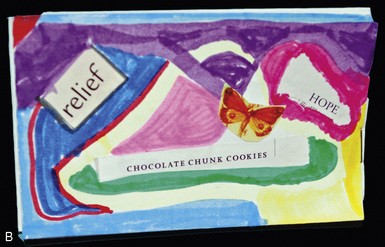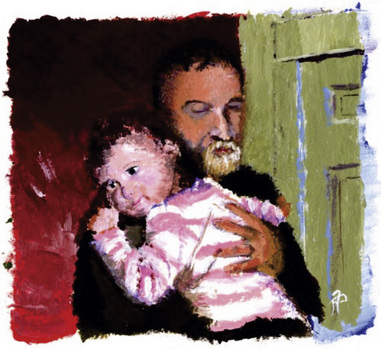23 Palliative Sedation
Terminology
Terminal sedation was described in the literature in 1991 as “as the intention of deliberately inducing and maintaining deep sleep, but not deliberately causing death in very specific circumstances.”1 However, a lack of consensus over the definition of terminal sedation exists amongst palliative care experts. In addition, it does not convey or emphasize the aim of sedation, to palliate symptoms, or the possibility that the patient may awaken or recover. In fact, terminal could be interpreted to mean the intentional ending of life. In one survey of 61 palliative care experts (59 physicians and two nurses, response rate of 87 percent) only 21 (40 percent) agreed that terminal sedation was “the intention of deliberately inducing and maintaining deep sleep, but not deliberately causing death in very specific circumstances.”2 In response to this continued lack of consensus, other terms such as sedation for intractable distress in the dying or sedation in the imminently dying arose as alternatives in the literature,3 and have evolved into the most commonly used term, palliative sedation.4 While there is not complete agreement on the optimal terminology or definition, most would agree that PST is “the use of sedative medications to relieve intolerable suffering from refractory symptoms by a reduction in patient consciousness.”5 PST is usually administered for intractable symptoms at the end of life. Because the addition of “therapy” to the term emphasizes that it is an accepted palliative treatment for symptoms rather than an end in and of itself, palliative sedation therapy is used in this chapter.
PST may be further described in terms of the level of sedation achieved, that is from mild to deep, as well as the intended duration, such as continuous versus intermittent or respite sedation. In general, the goal of PST is for the child to be in a state of conscious sedation, with relief from symptoms but still able to communicate. In rare situations requiring urgent relief of suffering, deep sedation may instead be the goal. If there is no intention of waking the patient, then continuous sedation is used. Both deep and continuous sedation can be recommended only for patients with an expected prognosis of hours to days without a treatable condition.6 Respite sedation is a subtype of palliative sedation therapy intended to be time-limited and temporary in nature. Such temporary respite from suffering may allow continued or future therapy to provide relief,7,8 or may provide relief and rest for a patient when their perception of intolerability is impacted by factors that create severe physical and emotional fatigue.6,7
A clear definition for refractory symptom is central to the discourse regarding palliative sedation. Cherny and Portenoy’s definition of refractory symptoms is widely accepted: “symptom[s] for which all possible treatment has failed, or it is estimated that no methods are available for palliation within the time frame and the risk-benefit ratio that the patient can tolerate.”7 Refractory symptoms can be categorized by the clinician using the diagnostic criteria as those symptoms in which further interventions are:
Despite controversy surrounding nomenclature as well as some of the specific indications for PST, this treatment modality is by and large accepted worldwide as an intervention for patients with refractory suffering at the end of life. In 2007, international guidelines and recommendations for standards were developed with representation from the United Kingdom, the Netherlands, Belgium, France, Germany, Switzerland, Finland, Canada, the United States, Argentina, South Africa, Israel, Japan, Australia and New Zealand.5 The European Association for Palliative Care developed a recommended 10-point framework for the use of palliative sedation based on existing guidelines, literature, and extensive peer review. This framework supports the use of palliative sedation as important and necessary, when used appropriately and ethically, in patients with otherwise refractory distress.6 However, literature regarding the provision of PST in the pediatric population is scant, and outside of one review,9 largely consists of case reports. Except where specified in this chapter, evidence presented reflects PST in adults. Issues regarding PST in children that require special consideration are discussed later in this chapter.
Setting the Stage
A variety of factors may influence the decision to initiate PST (Box 23-1). While PST is an effective palliative intervention for relief of suffering, the risks and potential controversy surrounding it require careful consideration of the situation from a variety of perspectives. This section describes some key issues that must be taken into account before this therapeutic option is employed. Communication with the family and entire care team around these issues is essential.
BOX 23-1 Factors Influencing the Decision to lnitiate Palliative Sedation Therapy
* Curlin FA, Lawrence RE, Chin MH, Lantos JD. Religion, conscience, and controversial clinical practices. N Engl J Med 356:593–600, 2007.
† Morita T, Akechi T, Sugawara Y, Chihara S, Uchitomi Y. Practices and attitudes of japanese oncologists and palliative care physicians concerning terminal sedation: a nationwide survey. J Clin Oncol 20:758–764, 2002.
Intolerable suffering
If refractory symptoms escalate to the point of intolerability, the predominant goal of care may shift from extension of life or preservation of function to that of alleviating of suffering. Suffering and distress are subjective phenomena (Fig. 23-1). As such, only the individual experiencing such suffering can truly deem his or her condition intolerable.10 However, many patients at the very end of life are unable to express whether their degree of suffering warrants sedation. In studies of adult palliative care patients, 22 percent to 49 percent of adult patients were not involved with the decision to undertake sedation for intolerable suffering.2,11,12 In these instances, proxies, in conjunction with the medical team, decided whether PST should be implemented. In pediatrics, parents most commonly serve as the surrogate decision makers for children. Skillful discussions with families regarding the distinction between the child’s suffering and their own are needed when PST is under consideration.
Developmental limitations or neurocognitive impairment are frequent conditions in children with life-threatening illnesses. In situations involving a pediatric patient, it is even more likely that a parent or guardian will make the decision about PST on behalf of the patient (Fig. 23-2). That is not to say that children should be routinely excluded from such discussions. Many children are able to consider significant decisions such as resuscitation status.13 The extent to which a particular child participates in a decision about PST depends greatly on the child as well as his or her family. Whether and how a child is involved in the determination of whether his or her suffering justifies PST should be decided by the family and care team on an individual basis, and include consideration of the extent to which the child can express his or her own will, understand the relevant information, and understand and acknowledge the implications of the choice.6
Distinguishing refractory symptoms from difficult symptoms
Before embarking on a consideration of PST, it is essential to distinguish symptoms that are challenging to manage from those that are not relieved by available measures within an acceptable timeframe and with acceptable toxicity. Further consideration of a symptom’s refractoriness should also include whether the patient’s medical team has enough expertise and experience to truly judge the symptom as refractory.5 Palliative care consultation, if available, should be a requisite condition whenever PST is considered. A palliative care team can help establish that all acceptable interventions to relieve suffering have been considered. In addition, a palliative care team can also ensure that the circumstances are considered from an interdisciplinary perspective, and that the physical, emotional, existential, and social dimensions of suffering have been thoroughly explored and addressed. If palliative care consultation is not an option, input from clinicians from different disciplines and with expertise in symptom control, ethics or the care of seriously ill children should be sought.
Symptoms Prompting Consideration of PST
Refractory physical symptoms such as pain, delirium and/or agitation, dyspnea, and nausea and/or vomiting may prompt consideration of PST. The published relative frequencies of physical symptoms invoking PST vary across settings and populations, and with the type of sedation studied.14,15 Large studies to determine the prevalence of indications for PST in children have not been conducted.
While the relative frequencies of refractory physical symptoms prompting PST may vary, refractory physical symptoms are generally accepted as potential indications for PST. This is largely due to the presence of well-established therapeutic strategies to be considered before the symptom is deemed refractory. Such physical symptoms also tend to occur late in the illness trajectory, when the proximity of death is incontrovertible.16
In contrast, distress from non-physical symptoms is less clear. In adults, such distress may involve feelings of meaninglessness and worthlessness; being a burden on others; dependency and/or the inability to take care of oneself; death anxiety, fear, and/or panic; a wish to control the time of death by oneself; and isolation or lack of social support.17 Therapeutic strategies are often less established and symptoms may fluctuate, complicating evaluation. These issues may all influence whether a nonphysical symptom is considered refractory, and whether the use of PST is proportionate to the suffering inflicted by the symptom. Finally, the beliefs of the members of the care team are likely to shape the determination of whether PST is acceptable treatment for refractory psychological and existential distress.18,19
Because nonphysical symptoms may not correlate with proximity to death, adults who receive PST for this indication may be sedated for a longer time before death. Some opponents of PST for psychological and existential distress argue that establishment of such suffering as refractory is difficult, and that it may be implemented earlier in the illness trajectory, with a concomitant increase in risk from PST and blurring of the distinction between PST and euthanasia.16,20,21 On the other hand, proponents of PST for psychological or existential suffering maintain that such suffering may cause more suffering than physical symptoms, with fewer therapeutic options. To facilitate decision making regarding PST and psychological and/or existential distress, there is a set of proposed clinical rules for consideration.16 This issue clearly requires further investigation prior to recommendation of it as a standard indication for PST in pediatrics.
Location of Care
The location of the child’s care should also be determined before initiating discussion of PST, because this is likely to affect PST option. In a multicenter study in Italy, wide variations in whether and how PST was implemented among centers was more reflective of differences in institutional policies and provider behavior rather than the patients’ preferences or needs.22 The availability of continuous palliative sedation or sedation to unconsciousness may be particularly uneven or unpredictable. Offering to relieve a child’s suffering through sedation when this is not a realistic option can leave a family feeling abandoned and the care team demoralized and guilty.23 Therefore, determining the range of options before presenting them to the family is recommended.
PST in adults is more commonly provided in inpatient settings, such as palliative care units. Institutional policies may restrict the availability of particular sedatives, such as propofol or dexmedetomidine, to the operating room, intensive care unit, or other specific clinical settings. Policies that permit the use of particular agents, such as midazolam or propofol, for the express purpose of PST in other settings do exist.24 Even with such policies, barriers such as logistical or clinical constraints and the healthcare team’s ethical or legal concerns may also determine whether PST is a viable option in certain settings.25
PST may also be implemented in the home setting; however, a high degree of cooperation and commitment from both staff and family is needed. Additionally, home-care staff are likely to be increasingly needed as the intensity of treatment increases.26 PST at home may present greater demands on home-care staff, with these individuals providing more emotional support for the family and experiencing more stress from the decision making.26
Artificial Hydration and Nutrition
Although provision of artificial hydration and nutrition (AHN) is not contraindicated during PST, it is unlikely to contribute to the patient’s comfort. It may actually detract from the goal of maximizing comfort by contributing to fluid overload or gastrointestinal discomfort.27 Discontinuation of AHN when PST is implemented has not been associated with shorter survival times,12 perhaps because patients with severely distressing and uncontrolled symptoms are unlikely to sustain themselves with oral intake for extended periods of time. In some cases where respite sedation is intended, ongoing provision of AHN may be consistent with the family’s primary goals. The interdisciplinary team approach is key in exploring the family’s personal or religious beliefs with regard to AHN. Some strongly believe that AHN be continued; in this case, AHN may be continued.
Communication with the Family Before and During PST
Frequent, open and honest communication with the family both before and during the provision of PST is crucial. Knowledge of end-of-life treatment options is highly variable in adult patients,28 and care teams should be aware of such variability when broaching the topic of PST with families. Decisions of great import, such as forgoing life-sustaining therapy, frequently require multiple conversations to reach consensus with families.29 Once initiated, PST is also associated with families expressing more concerns, so the importance of ongoing communication to readdress goals, plans, and the family’s needs persists, and may increase as duration of sedation increases.30
Bereaved family members of patients who received PST report having concerns about the patient’s distress, whether maximum efforts to control symptoms had been made before initiating PST, having opportunities to say important things to the patients before sedation, to understand their suffering, and for professionals to treat patients with dignity.31 Families also report feeling guilt, helplessness, and exhaustion during the process.
Opportunities, both initially and during follow-up conversations, are needed to address these concerns and feelings, which may compound the suffering that families endure during their loved one’s last days. Families report that information reduced their anxiety and confusion and gave them confidence that the staff was in control and would be able to help the patient.32 If care teams do not proactively create opportunities for ongoing communication to clarify the care plan, provide relevant information, and address questions during the provision of PST, then families may experience frustration and disappointment32 (Box 23-2).
Stay updated, free articles. Join our Telegram channel

Full access? Get Clinical Tree





